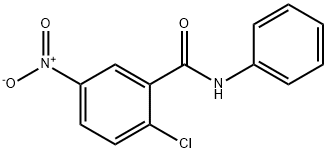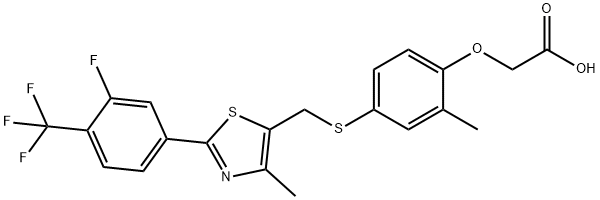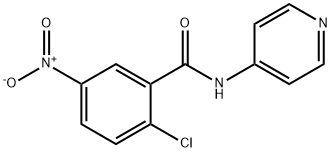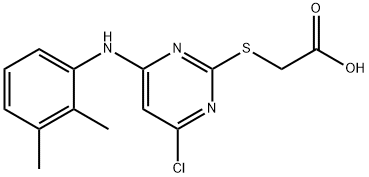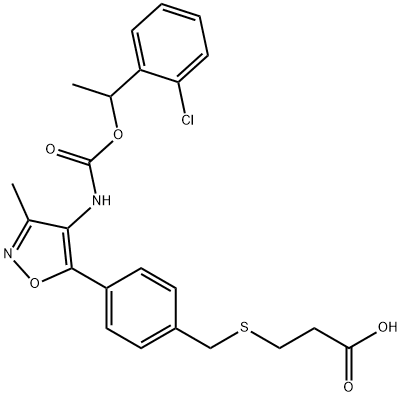4-Chloro-N-[2-[[5-(trifluoromethyl)-2-pyridinyl]sulfonyl]ethyl]benzamide
Synonym(s):4-Chloro-N-(2-((5-trifluoromethyl)-2-pyridyl)sulfonyl)ethyl)benzamide, PPARβ Antagonist I, PPARδ Antagonist I;4-Chloro-N-(2-{[5-trifluoromethyl)-2-pyridyl]sulfonyl}ethyl)benzamide;PPARβ/δ Antagonist, GSK3787 - CAS 188591-46-0 - Calbiochem
- CAS NO.:188591-46-0
- Empirical Formula: C15H12ClF3N2O3S
- Molecular Weight: 392.78
- MDL number: MFCD00099612
- SAFETY DATA SHEET (SDS)
- Update Date: 2025-04-17 18:22:24
![4-Chloro-N-[2-[[5-(trifluoromethyl)-2-pyridinyl]sulfonyl]ethyl]benzamide Structural](https://img.chemicalbook.in/CAS/GIF/188591-46-0.gif)
What is 4-Chloro-N-[2-[[5-(trifluoromethyl)-2-pyridinyl]sulfonyl]ethyl]benzamide?
Description
GSK-3787 (188591-46-0) is a selective and irreversible antagonist of the peroxisome proliferator-activated receptor δ (PPARδ) – plC50 = 6.6. It covalently binds to Cys 249 in the PPARd binding site.
The Uses of 4-Chloro-N-[2-[[5-(trifluoromethyl)-2-pyridinyl]sulfonyl]ethyl]benzamide
PPARβ/δ is thought to play a role in lipid homeostasis and glucose disposal by regulating genes involved in fatty acid oxidation, reverse cholesterol transport, and carbon substrate utilization in skeletal muscle. It has also been implicated in the progression of certain cancers. GSK3787 is an irreversible antagonist of PPARβ/δ (pIC50 = 6.6) with no measurable affinity for PPARα or PPARγ (pIC50 >5). At 1μM, it inhibits the expression of PPARβ/δ-regulated target genes, pyruvate dehydrogenase kinase 4 and carnitine palmitoyl transferase 1a, which are important for energy homeostasis in human skeletal muscle cells. GSK3787 (at 1 μM) also antagonizes agonist-induced expression of angiopoietin-like protein 4 in mouse fibroblasts, mouse keratinocytes, and human MCF-7, Huh7, and HepG2 cancer cell lines.[Cayman Chemical]
The Uses of 4-Chloro-N-[2-[[5-(trifluoromethyl)-2-pyridinyl]sulfonyl]ethyl]benzamide
GSK3787 has been used to inhibit the role of peroxisome proliferator-activated receptor-delta (PPARδ), during the pre-implantation period of bovine embryonic development. It has also been used as a PPARδ-specific inhibitor in in vitro maturation (IVM) media to inhibit PPARδ.
What are the applications of Application
GSK 3787 is a potent and selective peroxisome proliferatior-activated recepter δ antagonist
Biochem/physiol Actions
GSK3787 is an orally available selective irreversible Peroxisome Proliferator-Activated Receptor δ (PPARδ) antagonist (pIC50=6.6) with no measurable affinity for hPPARR or hPPARγ (pIC50<5). It acts by covalently modifying Cys249 within the ligand binding pocket, and has been shown to antagonize the induction of PPARδ-regulated target genes in skeletal muscle cells.
storage
Store at +4°C
References
Shearer et al., (2010)? Identification and characterization of 4-chloro-N-(2-{[5-trifluoromethyl)-2-pyridyl]sulfonyl}ethyl)benzamide (GSK3787), a selective and irreversible peroxisome proliferator-activated receptor delta (PPARdelta) antagonist;? J. Med. Chem.?53? 1857 Palkar?et al?(2010) Cellular and pharmacological selectivity of the peroxisome proliferator-activated receptor-β/δ antagonist GSK3787; ?Mol.Pharmacol.?78? 419
Properties of 4-Chloro-N-[2-[[5-(trifluoromethyl)-2-pyridinyl]sulfonyl]ethyl]benzamide
| Boiling point: | 585.1±50.0 °C(Predicted) |
| Density | 1.448±0.06 g/cm3 (20 ºC 760 Torr) |
| storage temp. | 2-8°C |
| solubility | DMSO: ≥10mg/mL |
| form | White solid |
| pka | 12.92±0.46(Predicted) |
| color | white to off-white |
| Stability: | Stable for 1 year for up to year from date of purchase as supplied. Solutions in DMSO may be stored at -20°C for up to 3 months. |
| CAS DataBase Reference | 188591-46-0 |
Safety information for 4-Chloro-N-[2-[[5-(trifluoromethyl)-2-pyridinyl]sulfonyl]ethyl]benzamide
Computed Descriptors for 4-Chloro-N-[2-[[5-(trifluoromethyl)-2-pyridinyl]sulfonyl]ethyl]benzamide
New Products
4-Piperidinemethanol Ethyl 2,4-Dihydroxy-6-methylnicotinate Ethyl isonicotinate 3-pyridine methanol N-Methyl 4-chloro-pyridine-2-carboxamide 2-Fluoro-6-iodobenzoic acid 2-((2,6-difluorobenzyl)(ethoxycarbonyl)amino)-4-((dimethylamino)methyl)-5-(4-nitrophenyl)thiophene-3-carboxylic acid Ethyl2-oxo-2,3,9,10-tetrahydro-1H-pyrido[3',4':4,5]pyrrolo[1,2,3-de]quinoxaline-8(7H)-carboxylate Elinzanetant tert-butyl 2-(4-amino-6-chloropyrimidin-5-yloxy)ethylmethylcarbamate Phenylazomalononitrile 5,6 Dimethoxy-1-indanone 3-Iodophenylacetic acid 2-Hexyn-1-ol Dibenzo-18-crown-6 2-Propanamine, 1-chloro-, hydrochloride (9CI) 3-Pyridineacetonitrile, α-hydroxy- 3-(hexyloxy)-4-(pyridin-3-yl)-1,2,5-thiadiazole N Ethylmethylamine Ethyl Methanesulfonate N N' DimethylEthylenediamine Lead II Bromide Variamine Blue B Diazonium salt N N N'Trimethyl ethylenediamineRelated products of tetrahydrofuran
You may like
-
 Gsk3787 95% CAS 188591-46-0View Details
Gsk3787 95% CAS 188591-46-0View Details
188591-46-0 -
 GSK3787 >95% CAS 188591-46-0View Details
GSK3787 >95% CAS 188591-46-0View Details
188591-46-0 -
 GSK3787 CAS 188591-46-0View Details
GSK3787 CAS 188591-46-0View Details
188591-46-0 -
 PPARβ/δ Antagonist, GSK3787 CAS 188591-46-0View Details
PPARβ/δ Antagonist, GSK3787 CAS 188591-46-0View Details
188591-46-0 -
 53928-30-6 98%View Details
53928-30-6 98%View Details
53928-30-6 -
 5162-90-3 2-Amino-3-(1,2-dihydro-2-oxoquinoline-4-yl)propanoic acid 97%View Details
5162-90-3 2-Amino-3-(1,2-dihydro-2-oxoquinoline-4-yl)propanoic acid 97%View Details
5162-90-3 -
 4-(4-Chlorobenzyl)-2-(1-methylazepan-4-yl)phthalazin-1(2H)-one hydrochloride 98 %View Details
4-(4-Chlorobenzyl)-2-(1-methylazepan-4-yl)phthalazin-1(2H)-one hydrochloride 98 %View Details
79307-93-0 -
 (R)-2-amino-N-benzyl-3-methoxypropanamide 98%View Details
(R)-2-amino-N-benzyl-3-methoxypropanamide 98%View Details
196601-69-1


